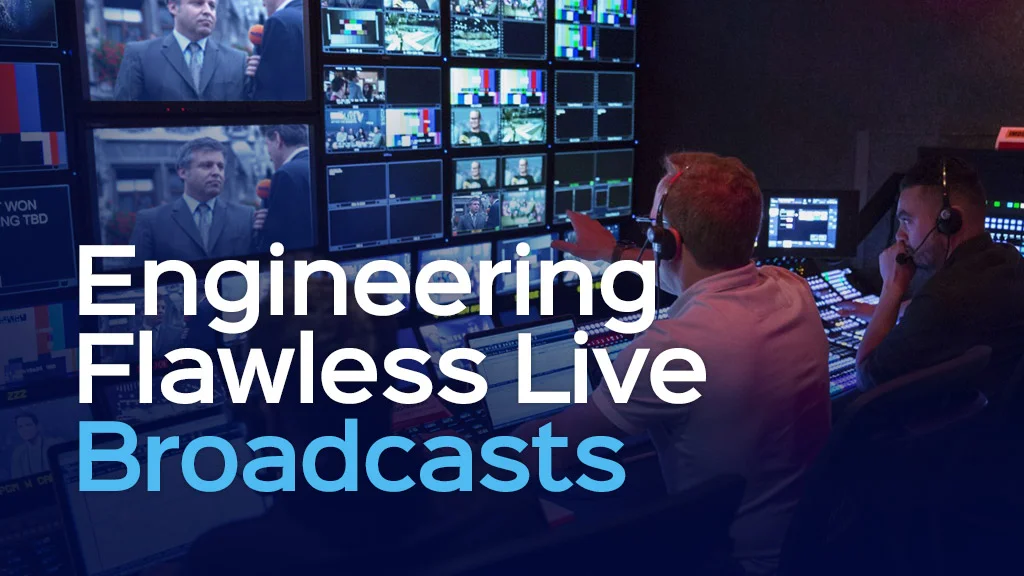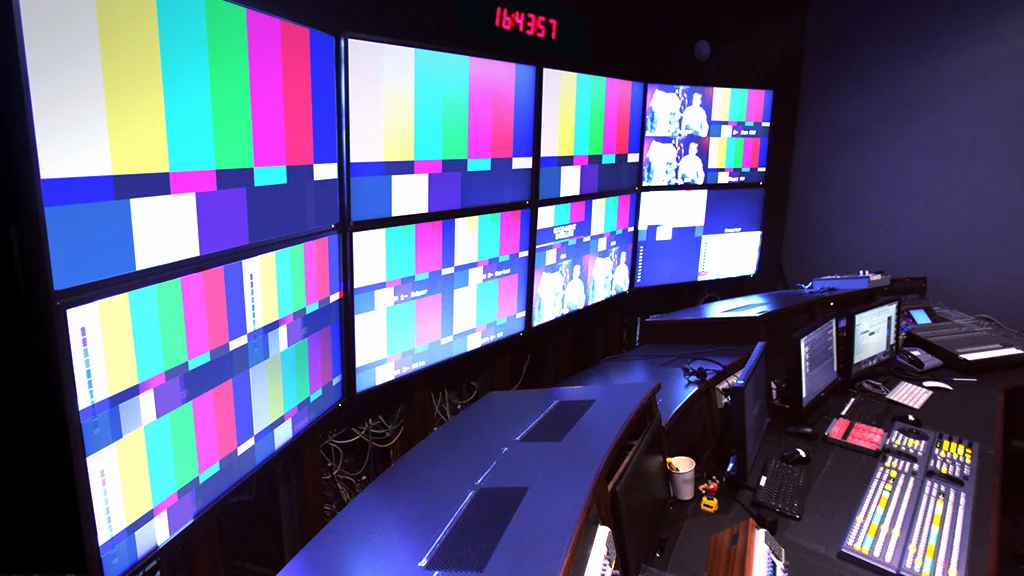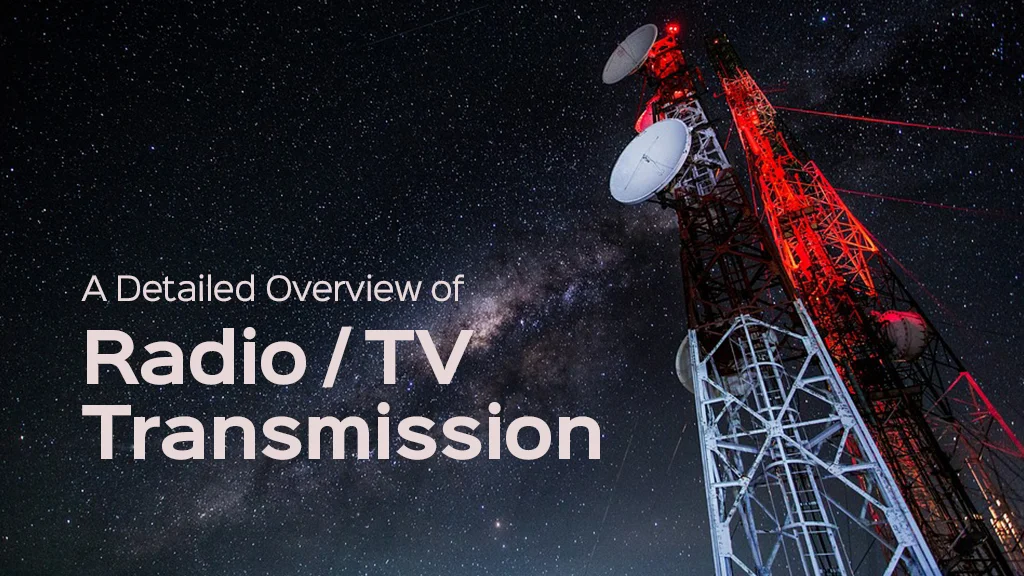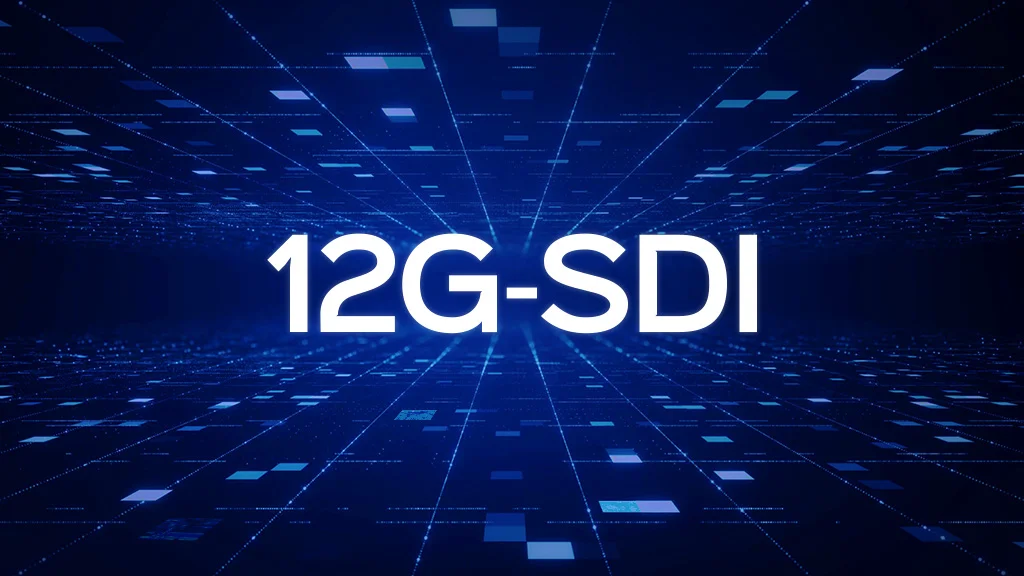
- Academy
- Article
The Power of 12G-SDI: Revolutionizing Live Production & Broadcasting
Driven by the growing demands for higher resolution video, the evolution to 12G-SDI standard represents a significant advancement in digital video transmission. This article examines the key differences between 3G-SDI, 6G-SDI, and 12G-SDI, detailing their technical specifications, supported resolutions, and industry applications.
It also explores the advantages of 12G-SDI, such as high-bandwidth capacity, low latency, and compatibility with IP-based workflows, and Finally, it highlights Samim Group’s 12G-SDI solutions, including distribution amplifiers, routers, and converters, … designed to enhance professional broadcast infrastructure.
Evolution from 3G-SDI to 12G-SDI
The evolution from 3G-SDI to 12G-SDI specification increased bandwidth, and support for newer content formats. These advancements are crucial for developing Live Broadcast Solutions that meet the needs of modern broadcasting environments. Here’s a detailed overview of this progression from the 3G-SDI era.
1. 3G-SDI (SMPTE 424M)
Introduced: Around 2007.
Data Rate: Supports a maximum data rate of 2.97 Gbps.
Resolution and Frame Rate: Capable of transmitting 1080p video at 60 frames per second (fps), and supports various formats, including 1080i and 720p.
Use Cases: Commonly used in broadcasting and professional video production for HD content and was an improvement over the previous HD-SDI standard (1.5 Gbps).
2. 6G-SDI
Introduced: Approximately in 2013.
Data Rate: Supports a maximum data rate of 5.94 Gbps.
Resolution and Frame Rate: Able to transmit 4K video (2160p) at lower frame rates (up to 30 fps) and also compatible with existing HD formats.
Use Cases: Gained traction as the industry began moving towards 4K content creation and transmission.
3. 12G-SDI
Introduced: Around 2015.
Data Rate: Supports a maximum data rate of 11.88 Gbps.
Resolution and Frame Rate: Capable of transmitting 4K video at 60 fps and supports HD formats. This makes it an ideal solution for high-performance applications in broadcasting and live events.
Use Cases: Increasingly used for high-bandwidth applications in broadcast industry, including live sports and high-resolution television production, especially as 4K and beyond becomemore prevalent.

ADVANTAGES OF 12G SDI
12G-SDI offers several advantages that make it a valuable technology in broadcasting and live production. Here are some of the key benefits:
High Bandwidth Capacity
4K Resolution at 60fps: 12G-SDI can transmit 4K video at 60 frames per second without compression, providing high-quality video suitable for various applications, including live sports and events.
Backward Compatibility
Integration with Existing Systems: The 12G-SDI standard is fully compatible with older SDI formats, allowing broadcasters and production facilities to upgrade their equipment without completely replacing their existing infrastructure.
Low Latency
Real-Time Transmission: With 12G-SDI, the signal transmission requirements are met with minimal delay, which is crucial for live broadcasts where timing is essential.
Multi-Channel Audio Support
Embedded Audio: In addition to video, 12G-SDI can carry multiple channels of audio embedded in the same signal. This streamlines workflows in live production and broadcasting.
Rugged and Reliable
Robust Physical Medium: Coaxial cables used for 12G-SDI are durable and can withstand the rigors of live production environments, providing a reliable solution for transporting high-quality video.
Reduced Cost
Cost Efficiency: By minimizing the need for multiple cables and simplifying infrastructure, 12G-SDI can lead to lower installation and maintenance costs for broadcasting facilities.
Versatile Applications
Broad Range of Uses: Its ability to deliver high-quality video makes 12G-SDI suitable for various applications, including live events, studio productions, film, and transmission, enhancing its utility across the industry.
Compatibility with IP-based Workflows
Integrative Potential: As the industry increasingly shifts towards IP-based infrastructures, 12G-SDI can be integrated into mixed workflows, providing flexibility and versatility in system design.
Read also :
Understanding Serial Digital Interface (SDI) Video
What Is the Difference Between 3G SDI vs. 6G SDI vs. 12G SDI?
1. Data Rate
The differences in data rates between 3G SDI, 6G SDI, and 12G SDI are significant. 3G SDI has a data rate of up to 2.97 Gbps, supporting single-link transmission of HD video formats, including 1080p at up to 60 frames per second (fps). In contrast, 6G SDI doubles this data rate to 5.94 Gbps, enabling the single-link delivery of 4K (UHD) video at 30 fps. Finally, 12G SDI standard further increases the data rate to 11.88 Gbps, allowing for the transmission of 4K video at 60 fps and supporting higher resolutions, such as 8K, under certain conditions.
Overall, each successive standard offers enhanced data rates, facilitating the transmission of higher-resolution and higher-frame-rate video content.
2. Supported Resolutions
3G SDI: Primarily used for HD video, specifically 1080p format.
6G SDI: Suitable for 4K (3840 x 2160) video at 30 fps.
12G SDI: Capable of supporting full 4K resolution at both 30 fps and 60 fps, as well as potentially higher resolutions like 8K under specific conditions.
3. Cable and Connector Requirements
Each successive standard typically requires better-quality cable and connectors to handle the higher bandwidth. 12G SDI might necessitate improved coaxial cables to maintain signal integrity over long distances.
4. Usage Context
3G SDI is common in HD television production.
6G SDI is increasingly used for broadcasting and video production, where 4K content is becoming the norm.
12G SDI is more future-proof, accommodating high frame rate, 4K content, and even 8K requirements for professional environments.
Applications of 12G SDI in Broadcasting
12G-SDI has numerous applications in the broadcasting and signal transmission industry. Here are some of its key applications in broadcasting:
High-Resolution Video Transmission: 12G SDI supports 4K video resolution at 60 frames per second without compression, making it essential for live sports events, cinematic broadcasts, and high-definition content production. In fact, Broadcast Signal Transmission using the 12G SDI standard ensures that every detail is preserved, meeting the demands of today’s high-quality broadcasting standards.
Use in Live Production Systems: Many live production switchers, routers, and monitors now support 12G SDI, enabling broadcasters to handle high-resolution feeds seamlessly during live events.
Support for HDR Content: As HDR (High Dynamic Range) content becomes more prevalent, the high bandwidth of 12G SDI is crucial for conveying enhanced video quality with improved contrast and brightness levels.
Virtual and Augmented Reality: As these technologies become more prevalent in broadcasting, the high data rates of 12G SDI support transmittingcomplex and high-resolution visual effects required for immersive experiences.
Overall, 12G SDI plays a crucial role in modern broadcasting, facilitating high-quality video transmission and supporting the industry’s ongoing evolution toward higher resolutions and more sophisticated production techniques.
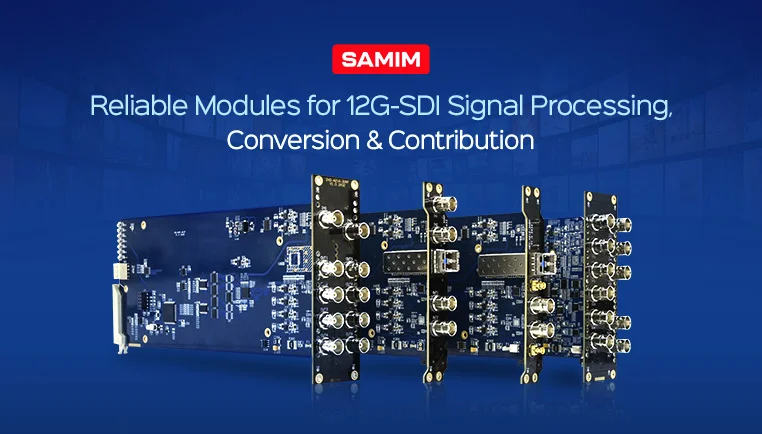
About Samim 12G SDI Products
Samim Group is a manufacturing company known for producing high-quality broadcast and video equipment, including various products featuring 12G SDI technology. Here are some key products that utilize this technology from Samim:
Distributors:
Samim offers three 12G video distribution amplifiers: DVD-4214, a versatile 1-to-8 or dual 1-to-4 SDI/ASI distributor; DVD-4108, a 1-to-8 12G SDI distributor with re-clocking, equalization, and optional bypass relay; and DVD-4204, a dual-channel 1-to-4 SDI distributor ensuring reliable signal distribution.
These 12G SDI distribution amplifier modules are designed to replicate a single 12G SDI signal into multiple outputs without degrading the quality of the original signal. This capability is essential for distributing high-quality video feeds to various parts of a production setup, ensuring that each output maintains the same integrity and sharpness as the original source.
Video Routers: Samim offers routing solutions that enable operators to efficiently manage multiple video channels. CSR-4032, as a 12G SDI router, ensure high-bandwidth video routing for live broadcasting environments.
SDI Converters: Samim UDC-4240 allows users to convert various video formats to and from 12G SDI, facilitating seamless integration into existing broadcast workflows. These modules help in maintaining high-quality video signals while adapting to different standards.
These products exemplify how Samim leverages 12G SDI technology to enhance broadcast capabilities, providing professional solutions for high-quality video production and transmission. If you’re looking for specific models or more details about any of these products, you might want to check Samim Group website for the latest offerings.


